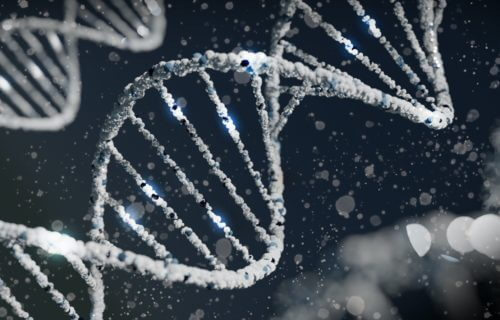SALT LAKE CITY — Imagine slowly losing control of your body as your ability to walk and balance gradually slips away. This is the reality for families affected by spinocerebellar ataxia 4 (SCA4), a rare and devastating neurological condition. However, after 25 years of uncertainty, a glimmer of hope has emerged. A multinational study led by researchers at the University of Utah has finally identified the genetic cause of SCA4, paving the way for potential treatments and providing long-awaited answers for affected families.
SCA4 is a progressive disease that typically manifests in a person’s 40s or 50s, although it can strike as early as someone’s late teens. The most common first sign is difficulty walking and balancing, which worsens over time. Until now, the cause of this debilitating condition remained a mystery, leaving families grappling with what some call a trial of faith and others simply a curse.
Published in the journal Nature Genetics, University of Utah researchers embarked on a challenging journey to unravel the genetic enigma of SCA4. The culprit gene had been narrowed down to a specific region of one chromosome, but this area proved exceptionally difficult to analyze due to its unusual chemical makeup and repetitive segments that resemble parts of other chromosomes.
Undeterred, researchers employed cutting-edge sequencing technology to compare DNA from affected and unaffected individuals in several Utah families. Their perseverance paid off when they discovered that SCA4 patients have an abnormally long section in a gene called ZFHX3, containing an extra-long string of repetitive DNA.
To understand how this genetic anomaly leads to disease, the team studied isolated human cells with the elongated version of ZFHX3. They found that these cells showed signs of distress, with impaired ability to recycle proteins and clumps of stuck-together protein.
“This mutation is a toxic expanded repeat and we think that it actually jams up how a cell deals with unfolded or misfolded proteins,” says the study’s last author, Dr. Stefan Pulst, chair of neurology at the University of Utah, in a media release.

The findings draw parallels to another form of ataxia, SCA2, which also interferes with protein recycling. Researchers are currently testing a potential therapy for SCA2 in clinical trials, and the similarities between the two conditions raise hopes that the treatment might also benefit SCA4 patients.
While the development of effective treatments will take time, the identification of the genetic cause of SCA4 is a crucial first step.
“The only step to really improve the life of patients with inherited disease is to find out what the primary cause is,” explains Dr. Pulst. “We now can attack the effects of this mutation potentially at multiple levels.”
For families affected by SCA4, simply knowing the cause of the disease can be immensely valuable. Researchers are emphasizing the importance of genetic testing, which can inform life decisions such as family planning.
“They can come and get tested and they can have an answer, for better or for worse,” notes study first author K. Pattie Figueroa, a project manager in neurology at the University of Utah.
Researchers are quick to acknowledge the generosity of SCA4 patients and their families, whose willingness to share family records and biological samples made the study possible.
“Different branches of the family opened up not just their homes but their history to us,” says Figueroa.
The team even traced the origins of the disease in Utah back to a pioneer couple who settled in the Salt Lake Valley in the 1840s. For Figueroa, studying SCA4 has become a personal quest.
“I’ve been working on SCA4 directly since 2010 when the first family approached me, and once you go to their homes and get to know them, they’re no longer the number on the DNA vial,” says Figueroa. “These are people you see every day… You can’t walk away. This is not just science. This is somebody’s life.”
The landmark discovery of the genetic cause of SCA4 offers hope to families who have long grappled with the uncertainty and devastation of this rare disease. While the road to effective treatments may be long, this study marks a significant milestone in the journey toward improving the lives of those affected by SCA4.
StudyFinds’ Matt Higgins contributed to this report.
